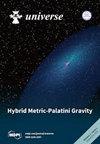测量质量难以捉摸的粒子的扑朔迷离的历史
IF 2.5
4区 物理与天体物理
Q2 ASTRONOMY & ASTROPHYSICS
引用次数: 0
摘要
自 1930 年泡利提出中微子存在的假说以来,中微子从未停止过提出新的观点,并为基本相互作用的全貌增添了新的物理学片段。它们只是弱相互作用,与标准模型的预言不同,它们的质量不到电子质量的百万分之一,这使得研究它们的特性非常具有挑战性。自 1998 年通过中微子振荡发现中微子以来,测量中微子静止质量的问题获得了越来越广泛的共识。可供实验的中微子源多种多样,从地球大气层中宇宙射线的核碰撞和超新星爆炸到加速器和动力反应堆产生的中微子束,不一而足。这些都为中微子质量绝对值的实验探测和测量提供了不同的方法。在本文中,我们将回溯这一努力的有趣故事,主要侧重于直接质量测定方法。本文还讨论了令人困惑的大质量中微子的性质问题,并明确提到双贝塔衰变现象是区分狄拉克中微子和马约拉纳中微子性质的可行实验工具。本文章由计算机程序翻译,如有差异,请以英文原文为准。
Measuring a Mass: The Puzzling History of an Elusive Particle
Since Pauli’s hypothesis of their existence in 1930, neutrinos never ceased to bring into play novel ideas and to add new pieces of physics in the whole picture of fundamental interactions. They are only weakly interacting and, at odds with Standard Model’s predictions, have a mass less than one millionth of the electron mass, which makes the investigation of their properties very challenging. The issue of the measurement of neutrino’s rest mass gained a wider and wider consensus since its discovery through neutrino oscillations in 1998. Various neutrino sources are available for experiments, ranging from nuclear collisions of cosmic rays in the Earth atmosphere and supernova explosions to neutrino beams produced by accelerators and power reactors. These suggest different approaches to the experimental detection and measurement of the absolute value of the neutrino mass. In this paper, we retrace the intriguing story of this endeavor, focusing mainly on direct mass determination methods. The puzzling issue of the nature of massive neutrinos is addressed as well with explicit reference to the phenomenon of double beta-decay as a viable experimental tool to discriminate between Dirac’s and Majorana’s nature.
求助全文
通过发布文献求助,成功后即可免费获取论文全文。
去求助
来源期刊

Universe
Physics and Astronomy-General Physics and Astronomy
CiteScore
4.30
自引率
17.20%
发文量
562
审稿时长
24.38 days
期刊介绍:
Universe (ISSN 2218-1997) is an international peer-reviewed open access journal focused on fundamental principles in physics. It publishes reviews, research papers, communications, conference reports and short notes. Our aim is to encourage scientists to publish their research results in as much detail as possible. There is no restriction on the length of the papers.
 求助内容:
求助内容: 应助结果提醒方式:
应助结果提醒方式:


